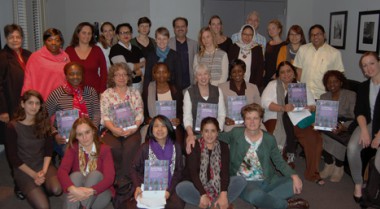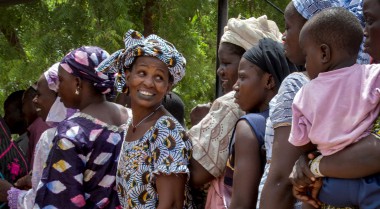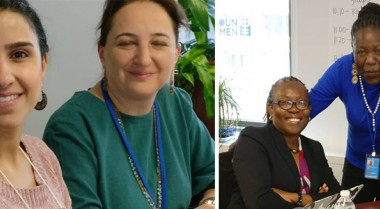
War and peace: still a man's world
Women are rarely seen to have a role in peace and security issues. The work of women's groups and organisations in conflict zones has long been underestimated and under-resourced. After decades of lobbying, funding for women's organisations in the peacebuilding field has increased. At the same time, a common requirement among donors has become for grantees to show how gender perspectives have been incorporated or "mainstreamed" in projects. However, this approach prevents us from achieving true gender equality. It isolates and burdens women's organisations, limits their contributions to broader peace-building practice and leaves peacebuilding organisations to their own devices when trying to truly invest in gender equality.
At the Global Partnership for the Prevention of Armed Conflict (GPPAC), we are committed to the meaningful integration of gender and seeing the UN security council resolution 1325 on women, peace and security implemented. The resolution "reaffirms the important role of women in the prevention and resolution of conflicts ... and stresses the importance of their equal participation and full involvement in all efforts for the maintenance and promotion of peace and security." We are participants of the Bridge project on gender and social movements; our gender policy is built on community-based research informed by women peacebuilders (for example on human security); and as a broader movement, we are well positioned to connect civil society with governments, regional organisations and the UN on crucial women, peace and security issues. Yet we still encounter two key challenges.
First, the message of women as active agents of change in peace and security (pdf) issues has got lost in the 13 years since resolution 1325 was adopted.
Women are largely only beeing involved in what are seen as "women's issues" – the peace process or the protection of women as victims of gender-based violence. Rarely is there focus on the role of women in efforts towards the prevention of violent conflict or their inclusion in traditional security issues.
This is reflected in donor priorities, as the results of the 2011 global survey on funding for women's rights, published by the Association of Women in Development, makes explicit. While important resources have been committed to Cedaw, the Convention to Eliminate all Forms of Violence Against Women, and several UN world conferences on women, engaging women's voices beyond these "women's issues", for example at the level of the UN department for political affairs, remains elusive.
Second, of the little funding that is available, most is allocated for women-led or women-only organisations. At GPPAC we count among our membership strong, women-led organisations (for example, FemLinkPacific) but believe the women, peace and security agenda can only be forwarded if women and men work together as allies. However, as we are not solely made up of women, GPPAC is ineligible for the majority of a very small pot of funding for these issues. The conflict we face as an organisation is that we struggle to find adequate resources for the work we do but at the same time, we do not wish to take the space which women-led organisations have worked hard for, for such a long time.
Herein lies the paradox. Generally, funding to support women, peace and security is increasing. Awareness of the crucial need to incorporate, or 'mainstream', gender in conflict prevention and peacebuilding efforts is increasing. Yet, the somewhat superficial, tick-box exercise in funding proposals that specifies funding must go to women's organisations is counterproductive to any meaningful integration of gender. It misses valuable input from feminist practice and ideas on preventing violent conflict, both from civil society and decision makers. Instead it risks reinforcing tendencies to treat gender as a separate issue from broader peacebuilding processes.
In a field where co-operation, collaboration and solidarity is so important, we find ourselves stuck. How can we effectively integrate gender with no resources and make a meaningful contribution towards gender equality? How can we support the women working to prevent violent conflict and promote their agency?
The opportunity created by the 15-year review in 2015 of resolution 1325 and related women, peace and security commitments should be seized as the next stepping stone – moving beyond the tick-box exercise in planning conflict prevention and peacebuilding efforts. Adequate funding, resources and buy-in from donors is crucial to this.
However, this should not be seen as sufficient for achieving deeper change in approaches towards women, peace and security issues. More and clearer funding incentives should be provided to organisations to actively integrate gender perspectives into their work. This includes building capacities and supporting women's leadership from within broader conflict prevention and peacebuilding movements. In equal partnership with women's groups, only then can we contribute to true gender equality.
This article is published in the guardian.


